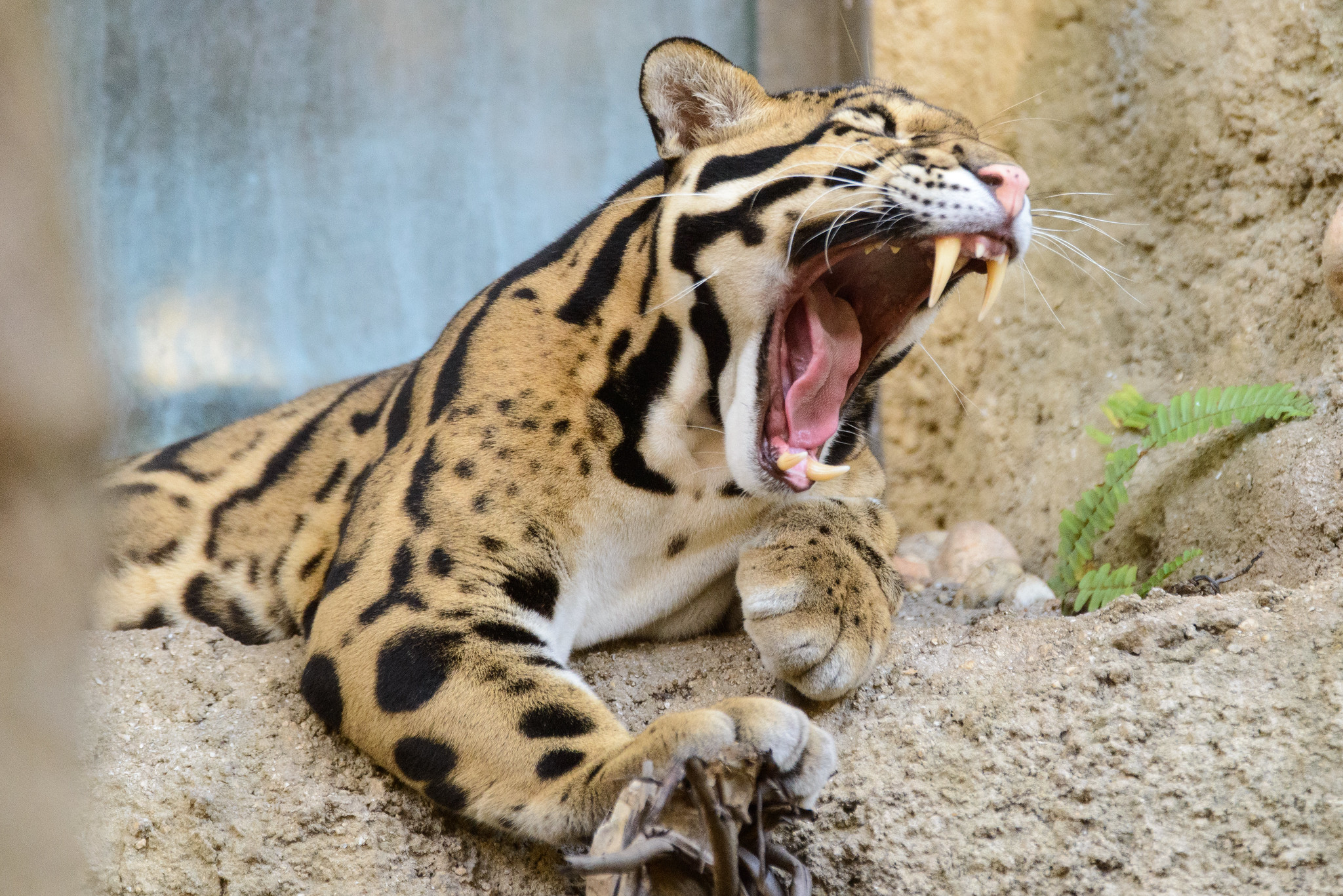
Clouded leopards are now known to be two distinct species: a mainland species found in fragmented habitats across the eastern Himalayas, southern China, Myanmar, and Malaysia, and the Sundaland clouded leopard on the islands of Sumatra and Borneo.
These regal and enigmatic animals are some of the strongest climbers among cats, spending much of their time quietly slinking along rainforest branches in a midnight quest for prey. Their targets are typically tree-dwelling animals, like primates or pangolins, but clouded leopards will also kill and eat small deer.

Clouded leopards also have the distinction of possessing the longest canine teeth proportionally found in modern felines, making them somewhat like miniature sabertooth cats. However, unlike true sabertooths, both sets of the clouded leopard’s canines—top and bottom—are noticeably dagger-like. In their perilous, arboreal habitat, those long fangs undoubtedly provide an advantage in holding onto struggling prey.
As their name suggests, clouded leopards are a part of the “big cat” – or Pantherinae – subfamily of cats. They are close relatives of leopards, lions, tigers, and the like, in contrast with almost all other species of mid-sized wild cat. However, clouded leopards are much smaller than these roaring relatives, and are an early evolutionary offshoot of the group, with many characteristics similar to small cats (like the ability to purr).
Clouded leopards have always been considered rare, but their numbers are declining further still due to habitat loss and poaching for their unique, attractive coat.




